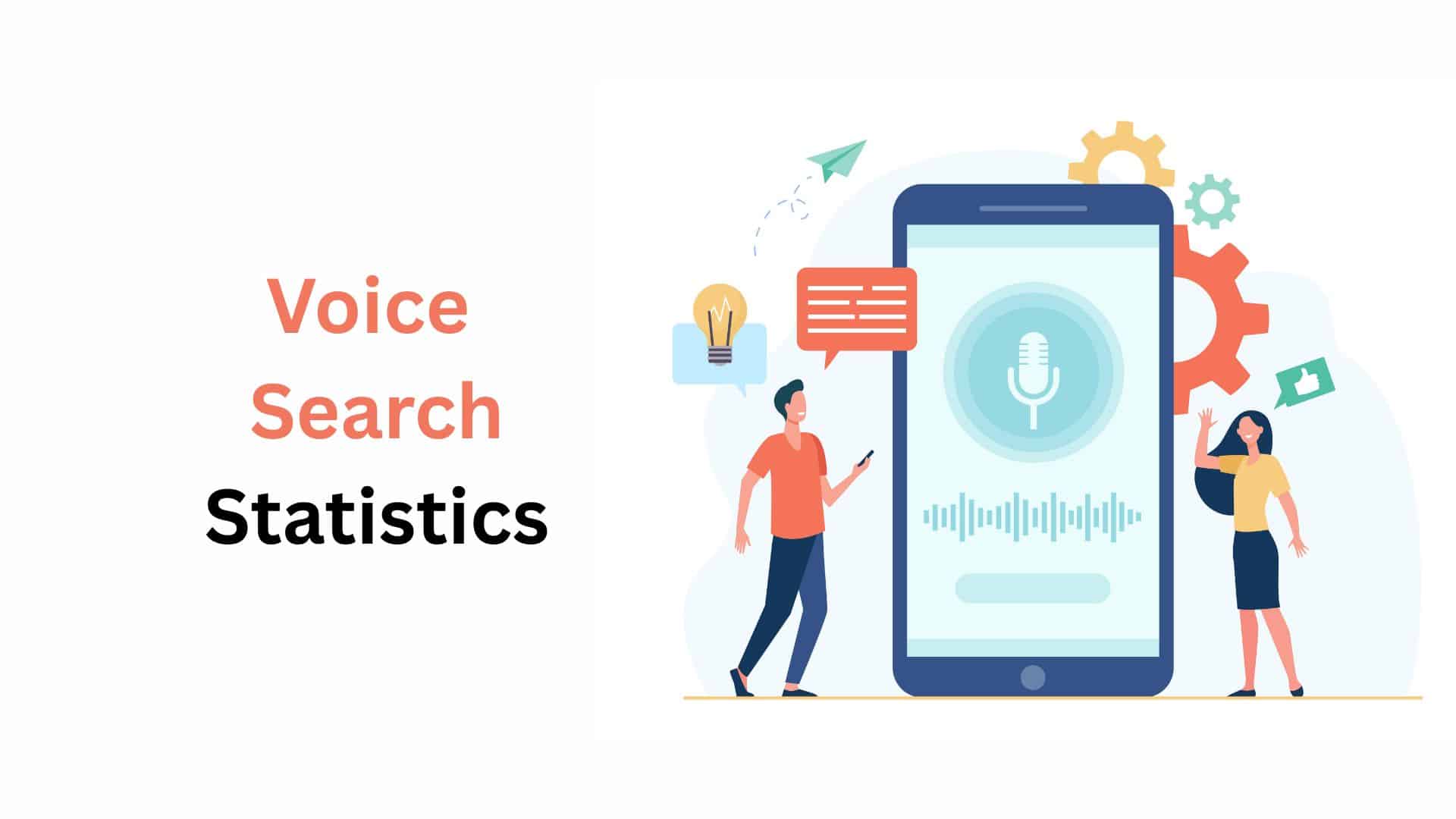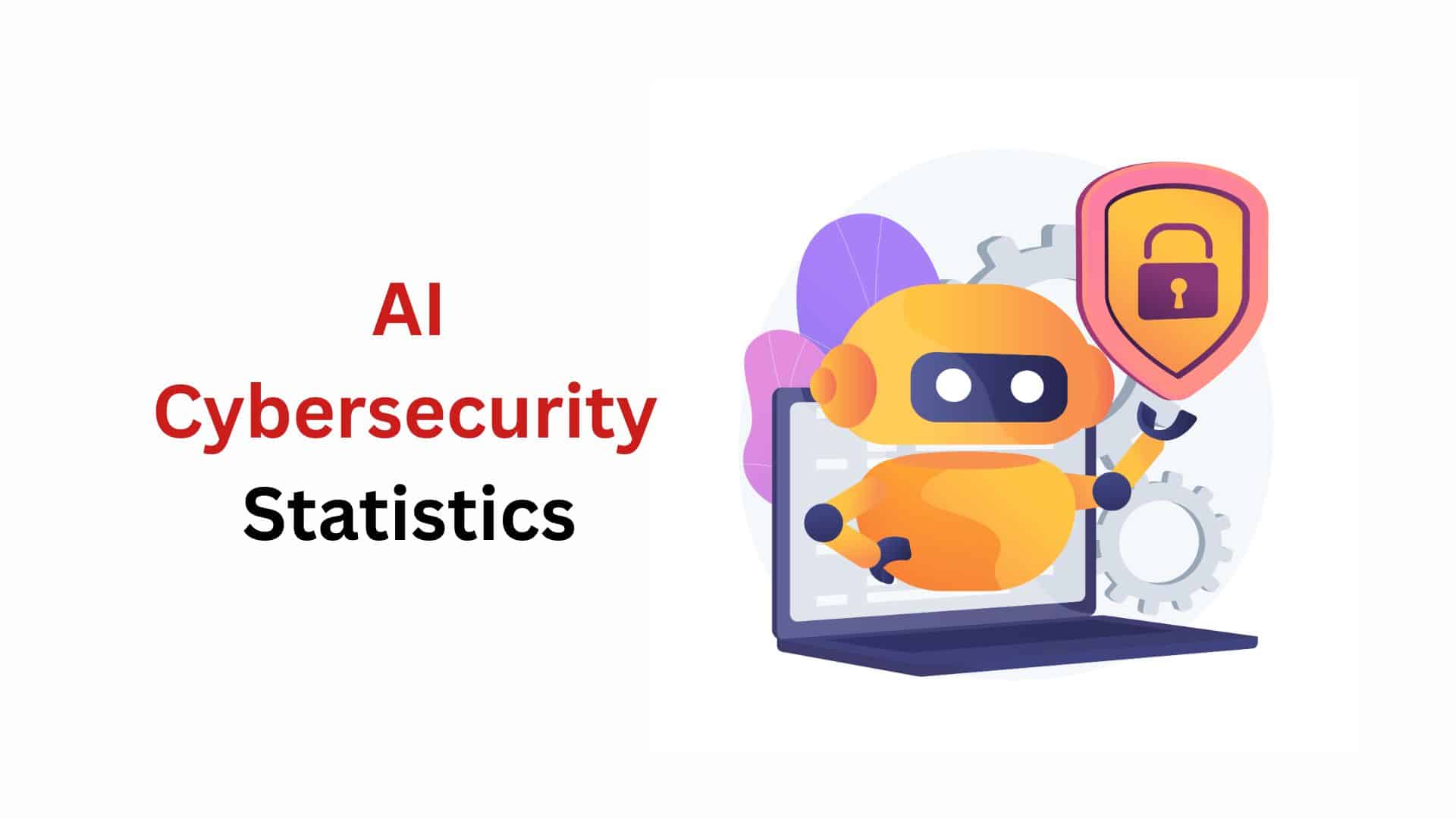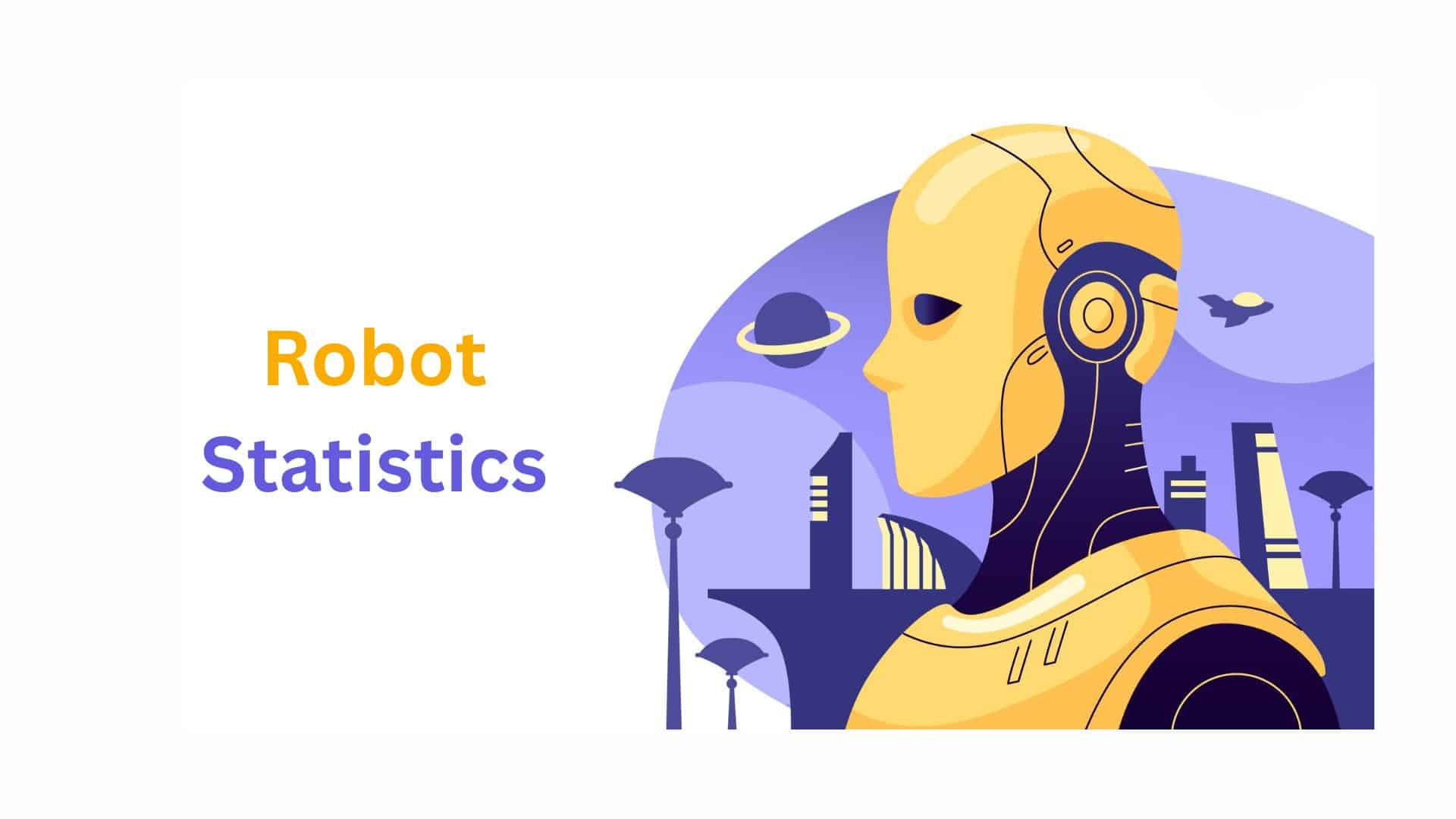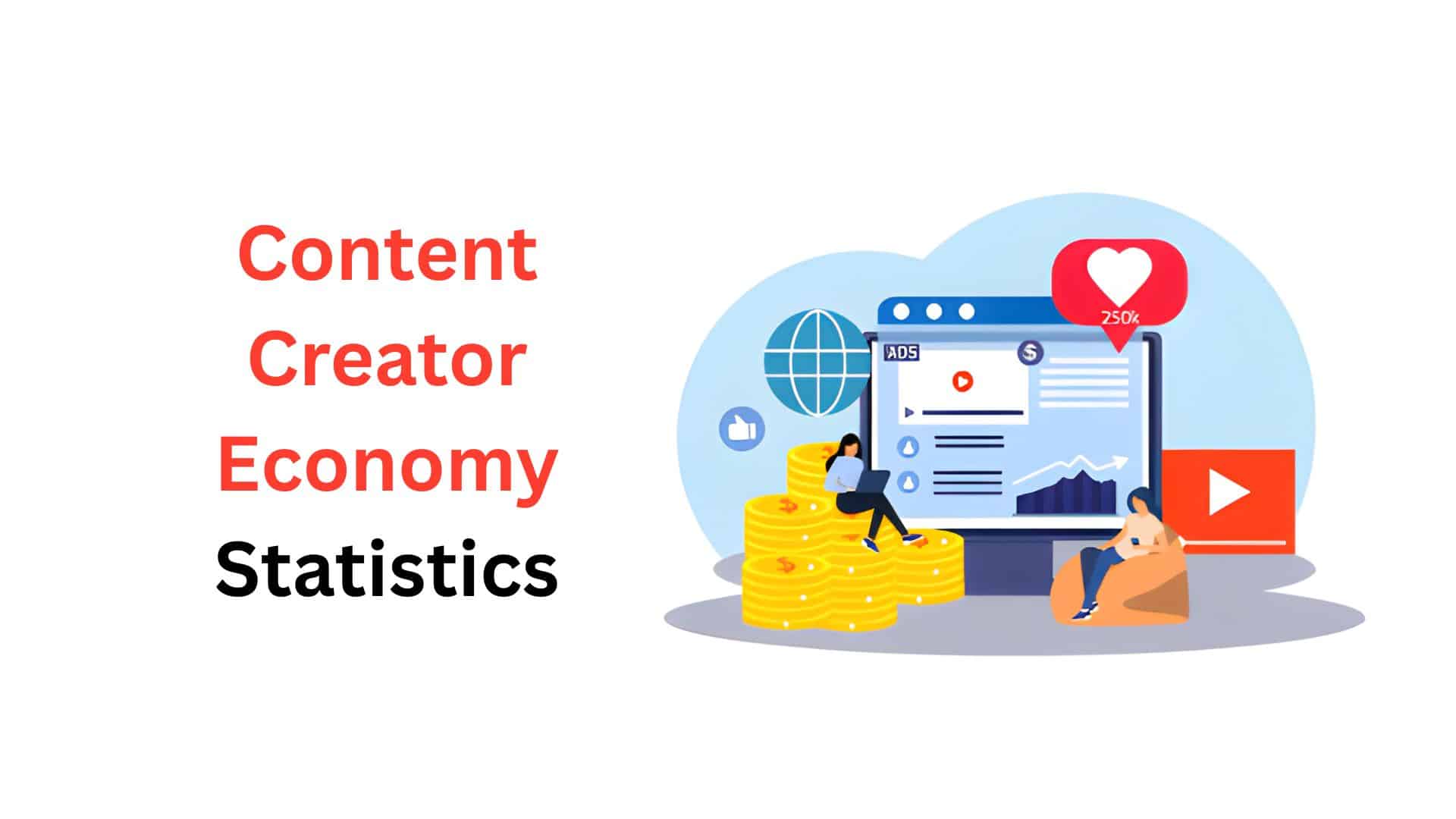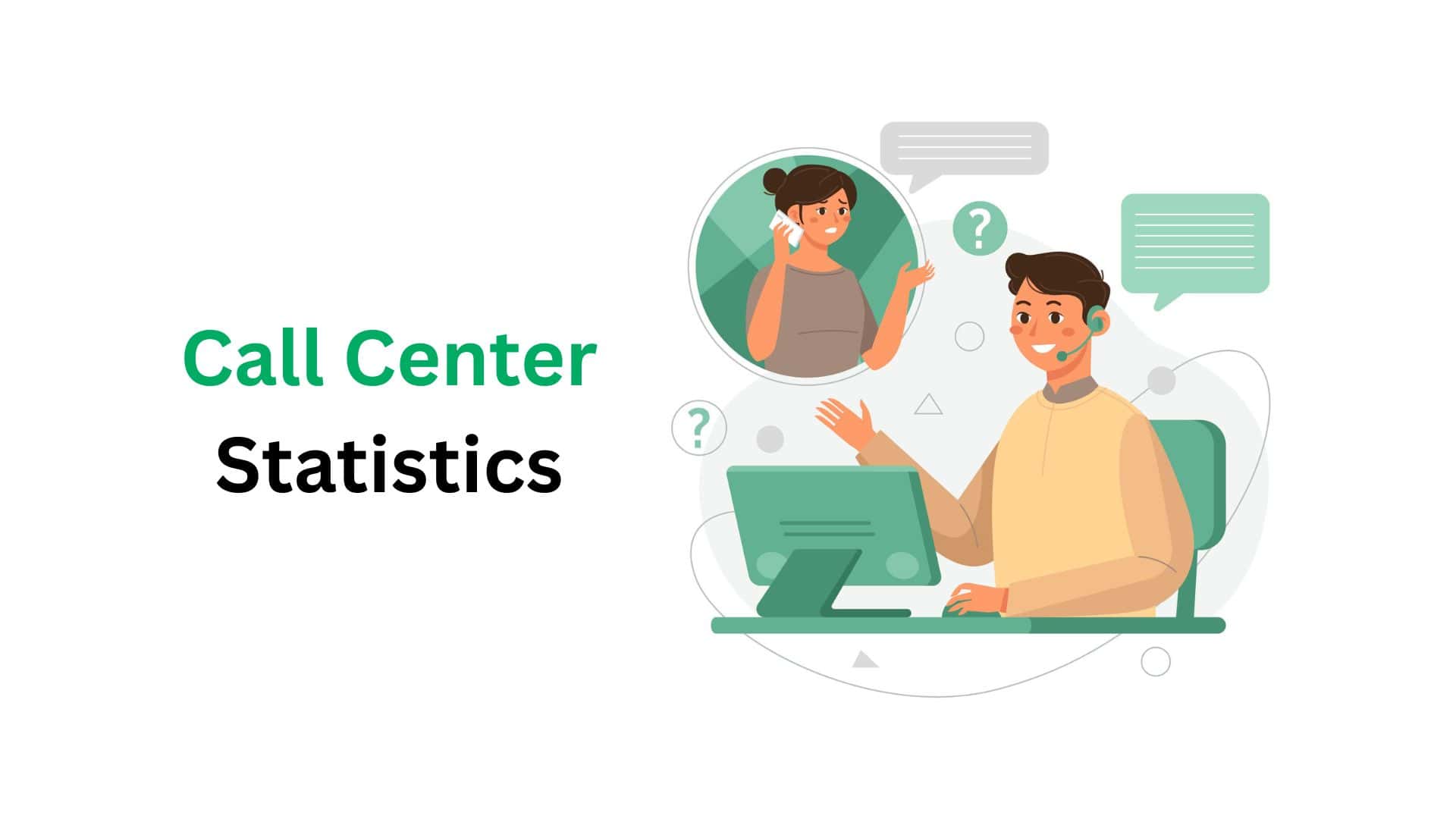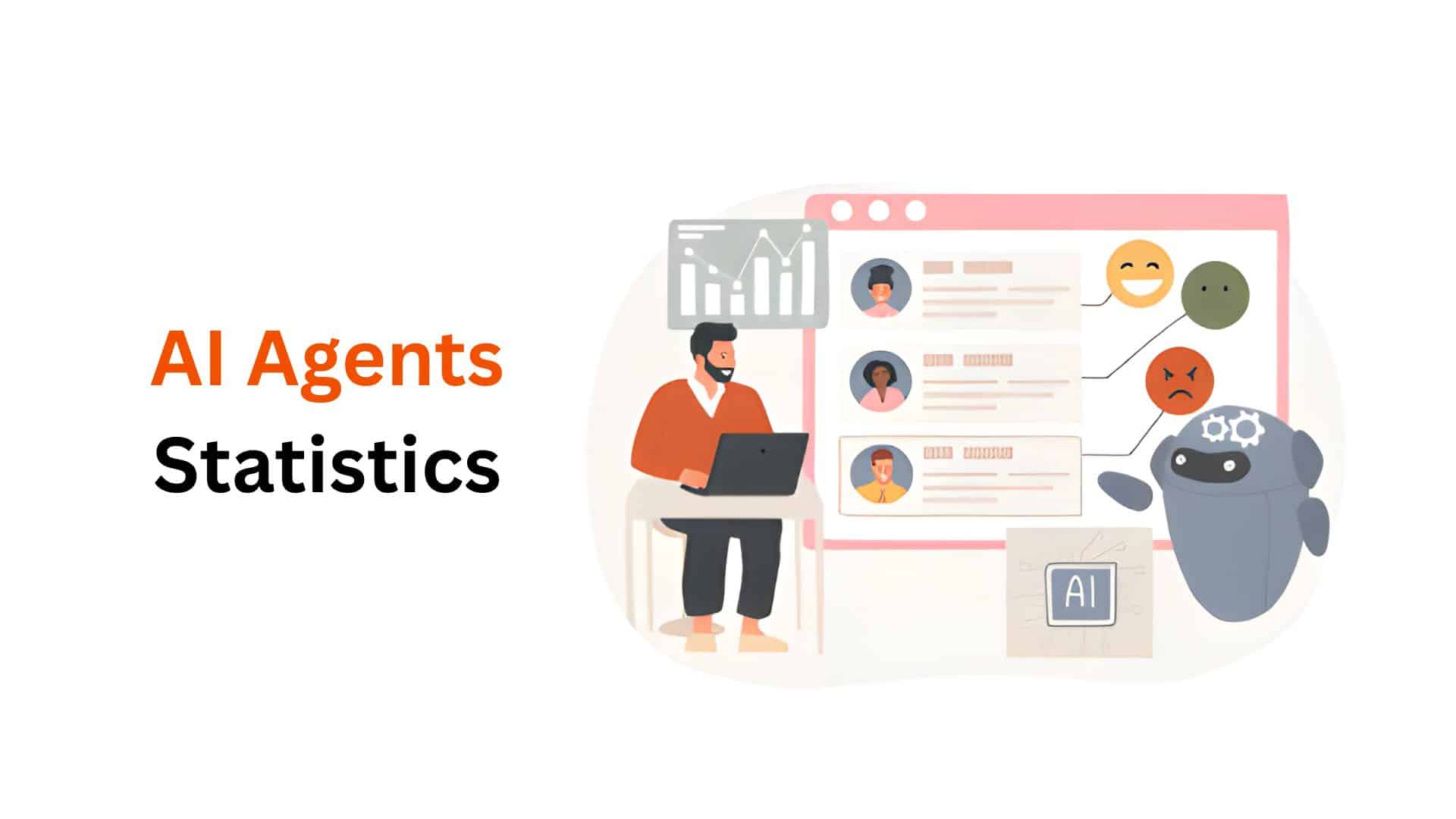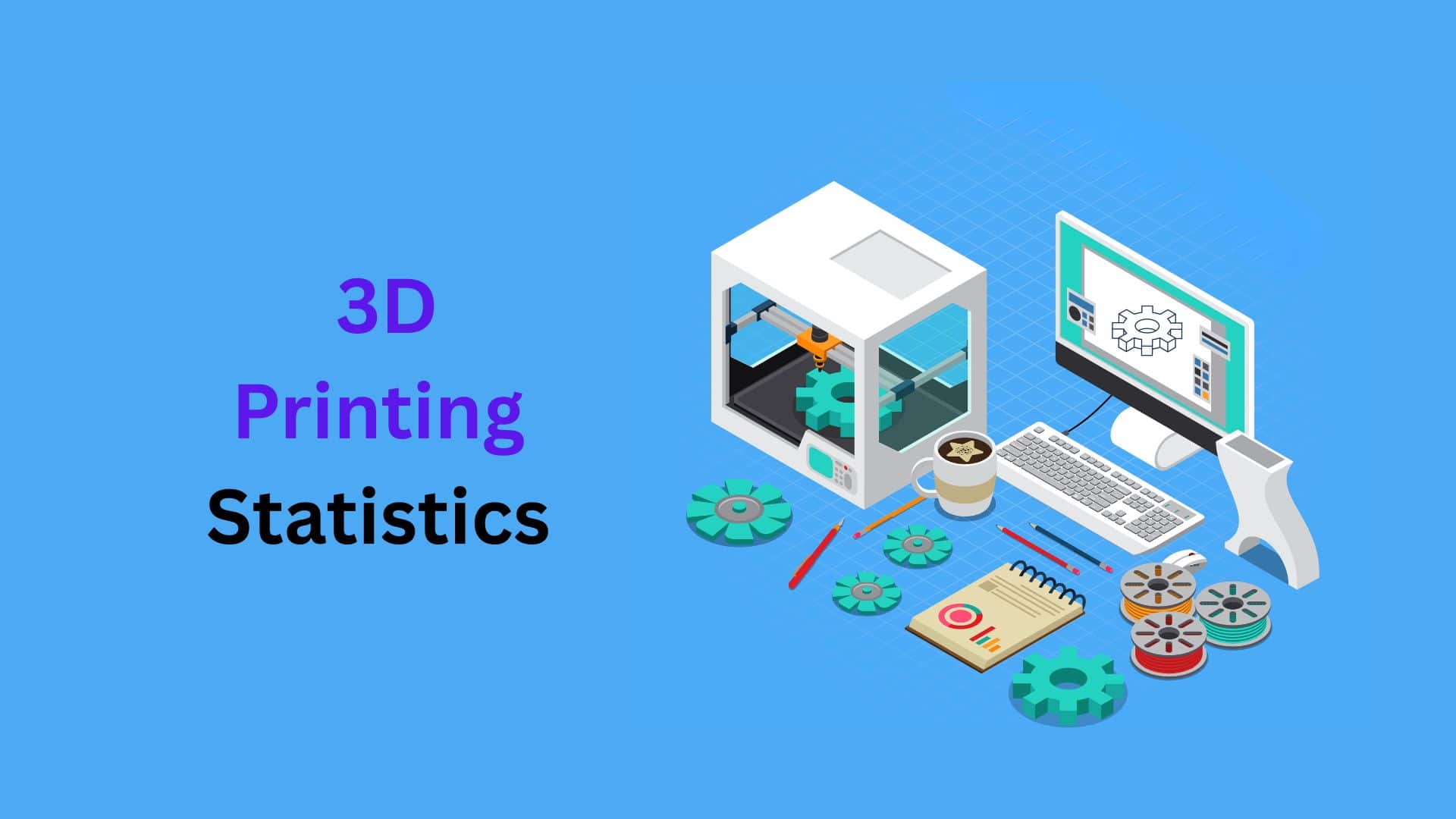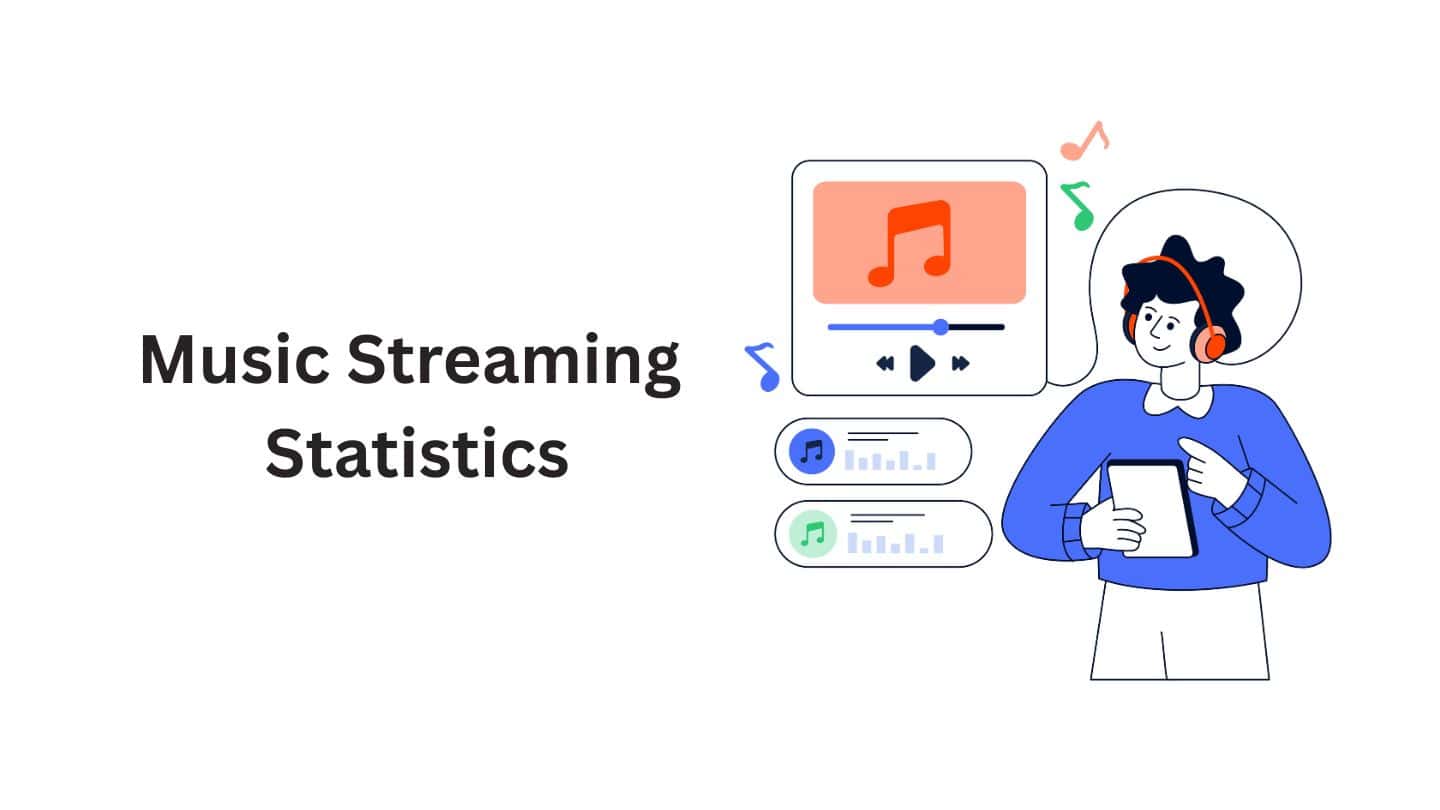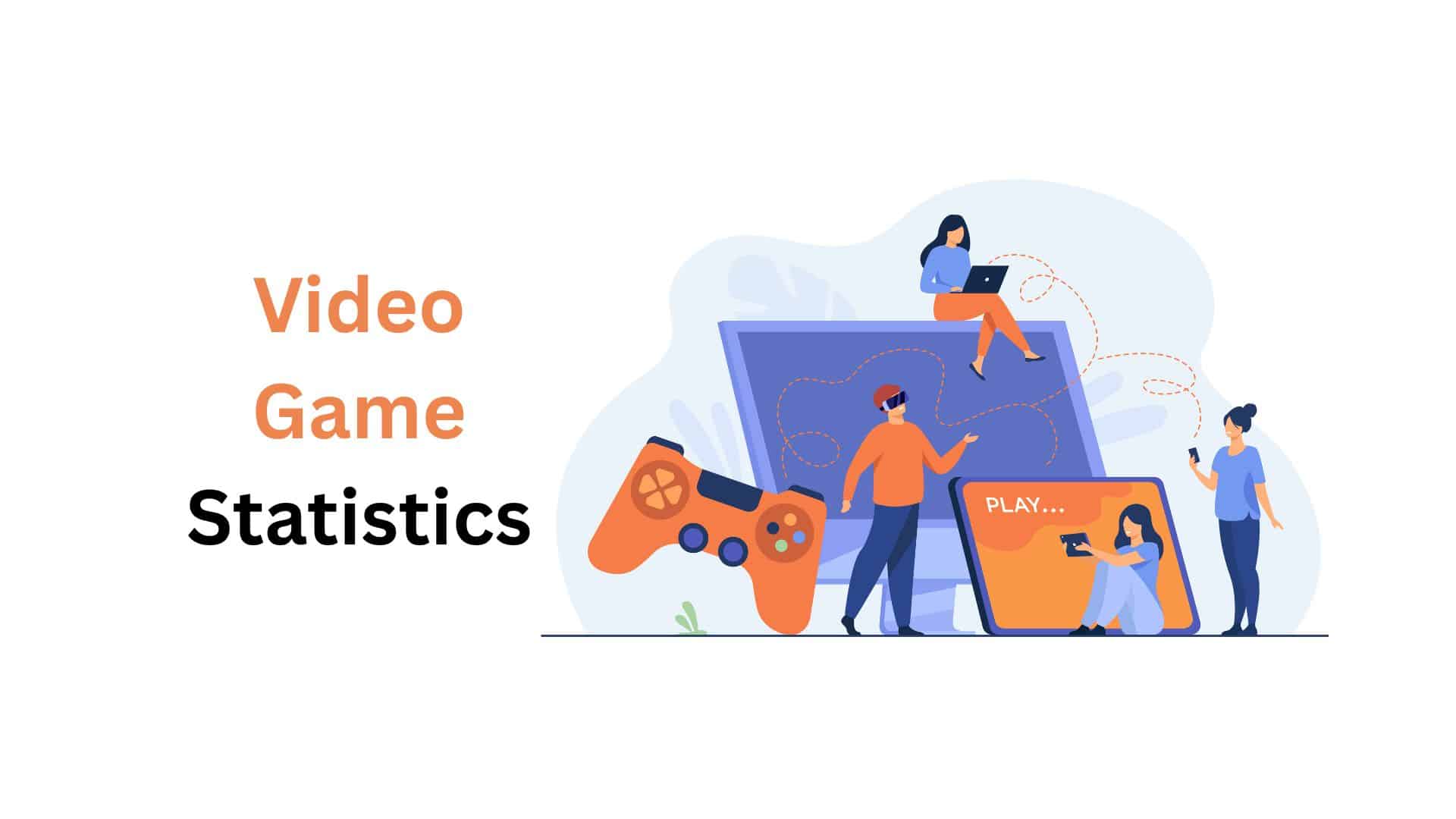Chatbot Statistics By Market, Adoption, Facts And Trends (2025)

Updated · Oct 03, 2025

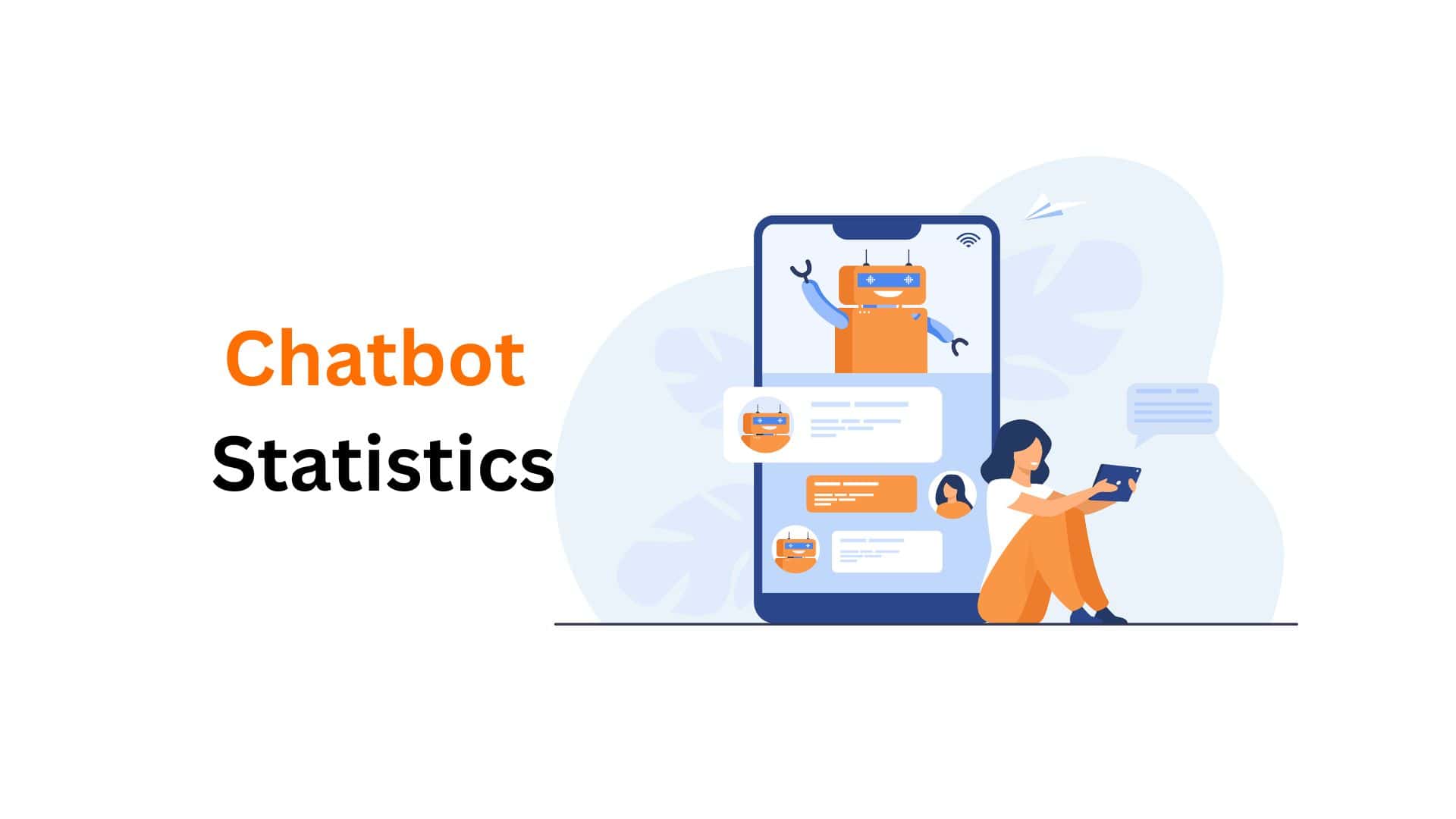
WHAT WE HAVE ON THIS PAGE
- Introduction
- Editor’s Choice
- Chatbot Global Market Statistics
- NLP Market Projections and Segments
- Chatbot Adoption, Cost Savings, and ROI for Businesses
- Consumer Engagement and Perception of Chatbot Use
- Chatbot Impact Across Key Industries
- Sector-Specific Chatbot and Adoption Rates
- The Rise of Generative AI and the Future of the Chatbot
- Chatbot Statistics Reflecting the Generative AI
- Conclusion
Introduction
Chatbot Statistics: Everywhere you look, the conversation is dominated by AI and its most visible messenger, the chatbot. But as a business leader, investor, or strategy analyst, you have critical questions that cut through the noise.
- How fast is the chatbot market actually growing?
- What is the real, measurable cost-saving benefit of using a chatbot?
- Are customers truly comfortable interacting with an AI, or do they still prefer a human?
Overall, what was once a simple automated tool has evolved into the definitive customer interface, and the data proves its exponential rise.
In this article, I’d like to discuss more about chatbot statistics. We peel back the layers of speculation to present the most vital data on the chatbot AI landscape from 2024 to 2025. From the projected $27.29 billion market size to the consumer expectation of a 5-second response time. Let’s get into it.
Editor’s Choice
- The global chatbot market is projected to reach $27.29 billion by 2030, reflecting a Compound Annual Growth Rate (CAGR) of 23.3%.
- Businesses can save up to 30% on customer support costs by using chatbots, which translates to an estimated $8 billion in global savings by 2025.
- An average chatbot interaction costs approximately $0.50, compared to roughly $6.00 for a human support interaction.
- A significant 67% of consumers have interacted with a chatbot for support or service purposes within the last year.
- By the end of 2025, an estimated 95% of all customer interactions are predicted to be assisted or fully powered by AI chatbots.
- 62% of consumers state they would prefer to use a chatbot rather than waiting for a human agent.
- Nearly 60% (59%) of customers expect a chatbot to respond to their query within 5 seconds.
- The B2B sector leads adoption, with 58% of B2B companies utilizing chatbots, compared to 42% of B2C companies.
- The Real Estate industry is currently the top sector for chatbot adoption, reporting a use rate of 28%.
- The leading Generative AI chatbot holds approximately 60% of the total Generative AI chatbot traffic in 2025.
Chatbot Global Market Statistics
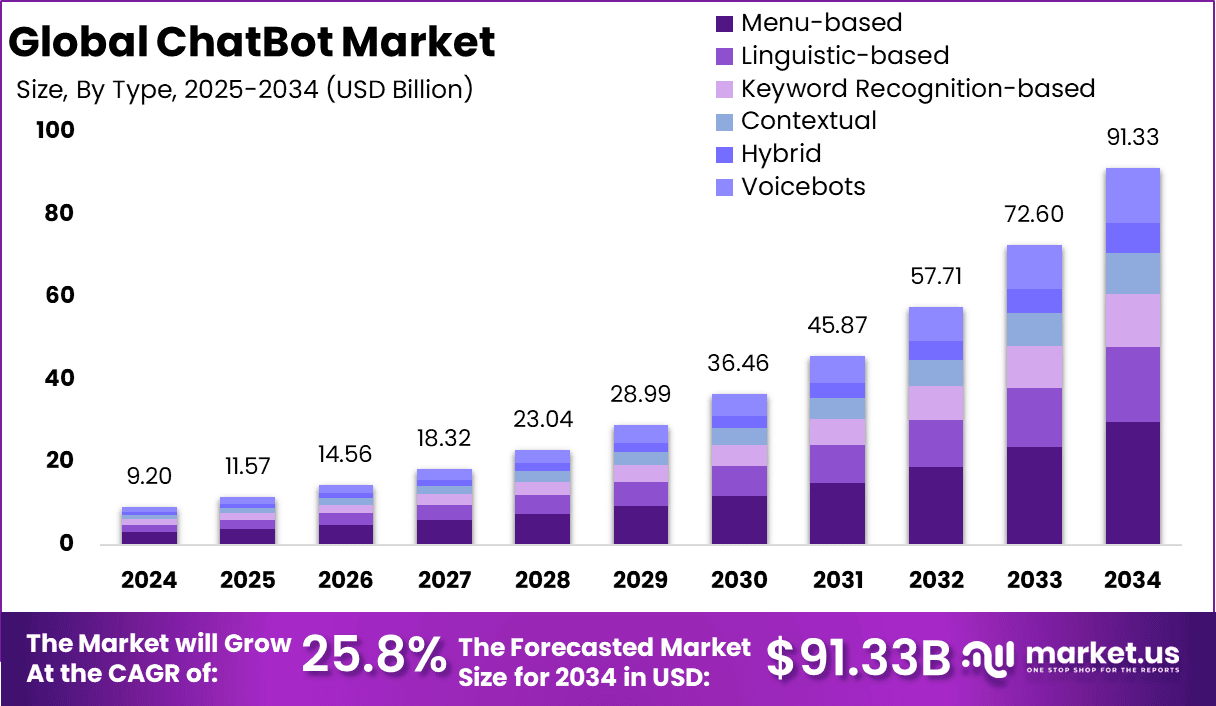
According to market.us, the chatbot market is not just growing, it’s undergoing a transformation, primarily powered by the accelerating adoption of AI for customer service and operational efficiency. Businesses are moving fast to integrate conversation AI, recognizing its potential to deliver 24/7 support and massive cost savings.
- The market is projected to skyrocket from $11.57 billion in 2025 to $91.33 billion by 2034.
- This represents a strong Compound Annual Growth Rate (CAGR) of 25.8%.
- The surge is driven by 3 main factors: the need for efficient customer service, the push for digital transformation, and users becoming more comfortable with AI interactions.
- Segment Leadership (2024):
- The solutions segment led the market, holding a 68.6% share due to its flexibility in automating customer chats.
- Simplicity Wins in Type: Menu-based chatbots captured 32.5% of the market, proving their efficiency for routine customer service tasks.
- Text-based chatbots held the largest share at 38.8%, credited to their ease of adoption across different platforms.
- The mobile apps segment was the top channel with a 42.2% share, reflecting the growing trend of embedding chatbots into smartphone applications.
- The contract centers segment accounted for 30.7% of the market, emphasizing the role of chatbots in making traditional call center operations.
- The retail and e-commerce sector held the largest industry share at 34.8%, showing the importance of chatbots in enhancing online shopping.
- North America led the global market, accounting for 37.5% of the share and generating $3.4 billion in revenue in 2024, supported by its early tech adoption.
NLP Market Projections and Segments

- The global NLP market is forecasted to increase from $67.8 billion in 2025 to $453.3 billion by 2032.
- The growth will be at a CAGR of 8.10% between 2023 and 2032.
- Market expansions are primarily made by the increasing use of NLP tools to improve data handling and manage the huge volume of unstructured data coming from digital sources.
- Segment Leadership (2022):
- The statistical NLP segment led the market with a 39.3% share, valued for its datasets for applications like chatbots and voice assistants.
- The On-Premises segment dominated the market, driven by the strong demand for enhanced security and control in high-stakes industries like finance and healthcare.
- The Automatic Summarization segment held a prominent position, spurred by the need for tools that can quickly condense large texts for efficient decision-making.
- Large enterprises captured the biggest share (62.1%), leveraging their scale and resources for deep NLP integration.
- The healthcare segment was the dominant industry with a 23.1% share, driven by goals to optimize operations and improve patient care.
- North America maintained a dominant position, holding 30.7% of the market share and generating approximately $8.56 billion in revenue in 2022, supported by its strong tech sector and rapid AI development.
| Market Value (2024) | $9.2 Billion / $7.76 Billion | $28.3 Billion (IMARC) / $29.71 Billion |
| Projected Market Value | $91.33 Billion by 2034 / $27.29 Billion by 2030 | $180.6 Billion by 2033 / $158.04 Billion by 2032 |
| CAGR (Forecast Period) | 25.8% (2025 to 2034) / 23.3% (2025 to 2030) | 21.73% (2025 to 2033) / 23.2% (2025 to 2032) |
| Largest Region (2024 Market Share) | North America ($3.4 Billion, 37.5% share) | North America (46.02% in 2023 / 48.3% in 2025) |
| Leading Segment (2024 Market Share) | Solutions Segment ($68.6% share) | Solutions Segment ($72.6% share in 2022) / Software (45.3% in 2025) |
| Leading Industry Vertical (2024 Market Share) | Retail and E-commerce (34.8%) | IT and Telecom (24.2% in 2025) / Business and Legal Services (26.5% in 2022) |
Chatbot Adoption, Cost Savings, and ROI for Businesses

- Up to 80% of routine customer inquiries are now capable of being handled by an AI chatbot, freeing human agents to focus on complex, high-value problem-solving, which improves overall service quality.
- Through automation, organizations can achieve up to 30% in cost savings for customer support operations, translating to billions in potential savings across the global economy.
- Leading companies that have successfully integrated advanced chatbots are reporting a high average ROI ranging from 148% to 200%, proving the financial effectiveness of conversational AI.
- It is predicted that by 2027, as many as 25% of organizations will rely on a chatbot as their primary customer service channel, signaling a fundamental shift away from traditional phone and email support.
- Around 78% of businesses have already implemented Conversational AI in at least one key function, with many starting pilots in IT, customer support, or lead generation.
- An overwhelming 90% of businesses that use chatbots report seeing faster complaint resolution times, drastically improving the customer experience metric of Average Handle Time.
- In the B2B sector, 58% of companies currently integrate a chatbot into their website, a higher rate than B2C companies, showing the tech’s effectiveness in lead qualification and sales enablement.
- A substantial number of 55% of companies that use a chatbot for marketing purposes report an increase in high-quality leads generated, directly linking the tech to revenue growth.
| Routine Tasks Automated | Up to 80% |
| Customer Support Cost Savings | Up to 30% |
| Average Leading ROI | 148% to 200% |
| Faster Complaint Resolution | 90% of businesses report this |
Consumer Engagement and Perception of Chatbot Use
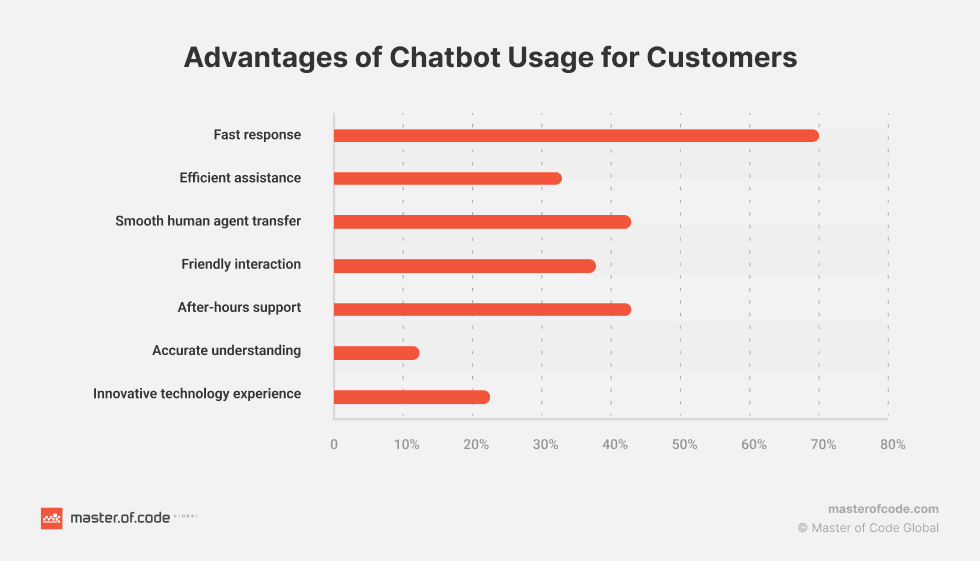
- A significant majority, approximately 67% of global consumers, have interacted with a chatbot for customer support within the past 12 months, making it a ubiquitous part of the modern digital experience.
- The primary value proposition for users is speed: 59% of consumers expect a response from a chatbot within five seconds, underscoring the demand for instant service delivery.
- The availability of service around the clock is highly valued, with 64% of internet users citing 24-hour service as the best feature of a chatbot interaction.
- When it comes to purchasing decisions, 36% of people report that chatbot recommendations frequently or always influence their buying choices, indicating a strong role in the sales funnel.
- For simple, transactional needs, 74% of internet users express a clear preference for using a chatbot to get simple questions answered immediately, rather than waiting to speak with a person.
- Impressively, 87.2% of consumers rate their recent interactions with chatbots as either neutral or positive, a strong indicator of the tech’s improving effectiveness and conversational capability.
- Only a small segment, about 9% of consumers worldwide, oppose companies using chatbots for customer service, confirming broad acceptance of the automated communication channel.
- Millennials are the power users of this tech, with 40% reporting they engage with a chatbot or other digital assistant daily, a key demographic for businesses to target.
| Consumers Who Have Used a Chatbot | 67% |
| Expectation for Response Time | 5 Seconds |
| Top Valued Feature | 24-Hour Availability (64%) |
| Positive/Neutral Experience Rate | 87.2% |
Chatbot Impact Across Key Industries
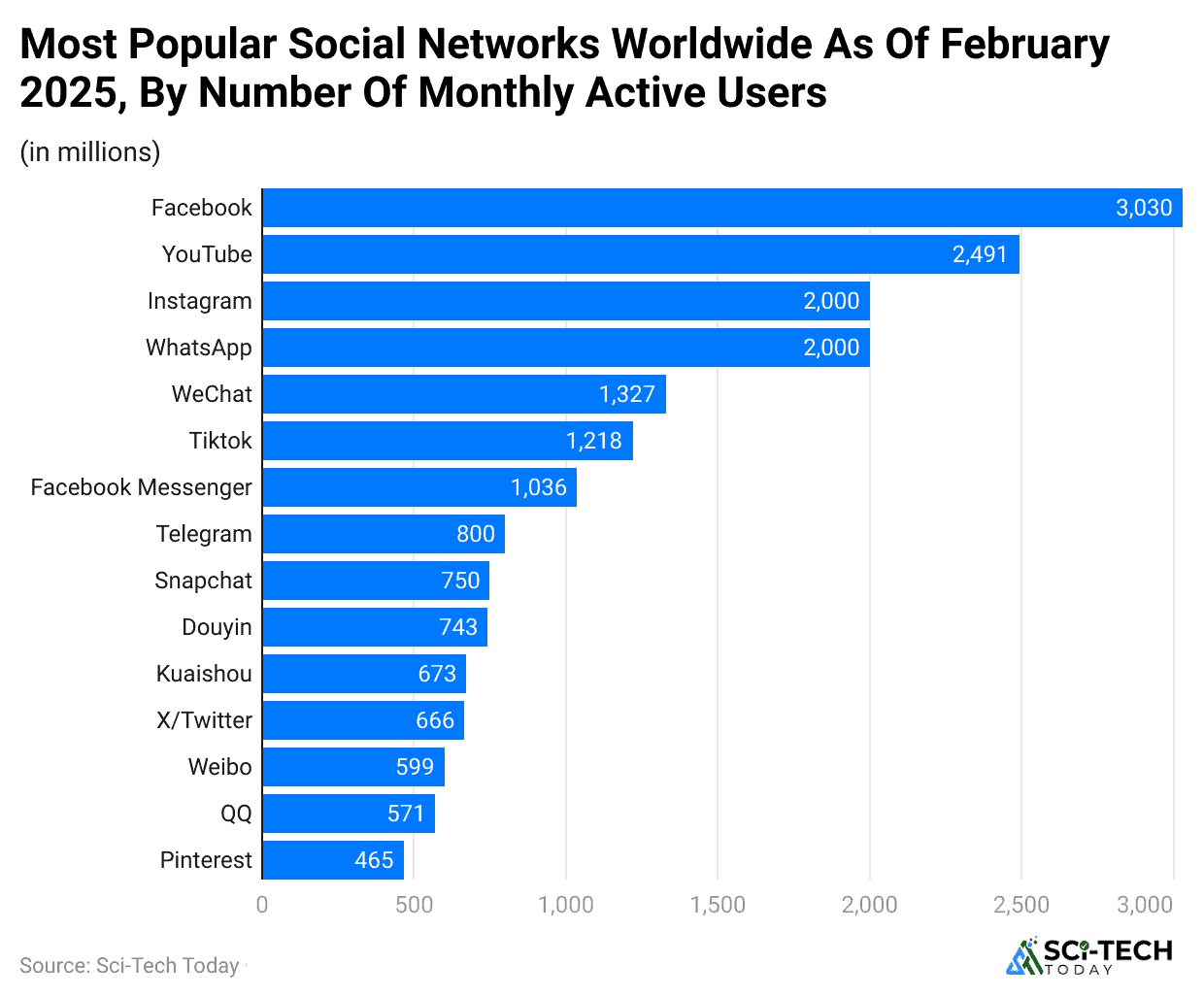
Sector-Specific Chatbot and Adoption Rates
Finance and Banking (BFSI)
- A substantial 43% of customers in the US now prefer using a chatbot or live chat over traditional phone calls to resolve their banking issues, signaling a permanent shift in service channels.
- Banks are projected to save between $0.50 and $0.70 per customer interaction by leveraging chatbots, which translates to global savings in the billions by 2023.
- The most successful financial institutions can potentially automate up to 90% of their customer interactions using advanced digital assistants, reserving human staff for complex financial advice and high-risk transactions.
- Banking chatbots can improve the First-Call Resolution rate by an average of 20%, boosting it from 50% to 70% by providing quick and accurate answers to common account questions.
E-commerce and Retail
- Retail acceptance of chatbots among customers sits at an estimated 34%, making it one of the most receptive sectors for this tech.
- It is projected that global consumer retail spending via chatbots will exceed $142 billion by 2024, a staggering increase that solidifies its role in transactional commerce.
- A significant 47% of consumers report being open to making actual purchases directly through a chatbot interface, effectively turning the support channel into a direct sales tool.
- Online retailers that integrate chatbots on platforms like Facebook Messenger for abandoned cart recovery and personalized promotions have reported revenue boosts ranging from 7% to 25%.
Healthcare
- The healthcare chatbot market is forecast to grow at a Compound Annual Growth Rate of over 15% through 2028, reflecting the industry’s serious investment in digital patient engagement.
- AI and chatbot tech have the capacity to automate over 70% of administrative tasks within the healthcare industry, greatly reducing the clerical burden on staff.
- Physicians view chatbots as highly helpful for administrative duties, with 78% believing they would assist with scheduling doctor appointments and 76% for locating health clinics.
- During the COVID-19 pandemic, nearly 60% of users reported beginning to use a mental health chatbot, highlighting their utility during periods of high stress and isolation.
| Finance | Account Management & Payments |
| E-commerce | Sales & Order Tracking |
| Healthcare | Administrative Support |
| Real Estate | Lead Qualification & Booking |
The Rise of Generative AI and the Future of the Chatbot
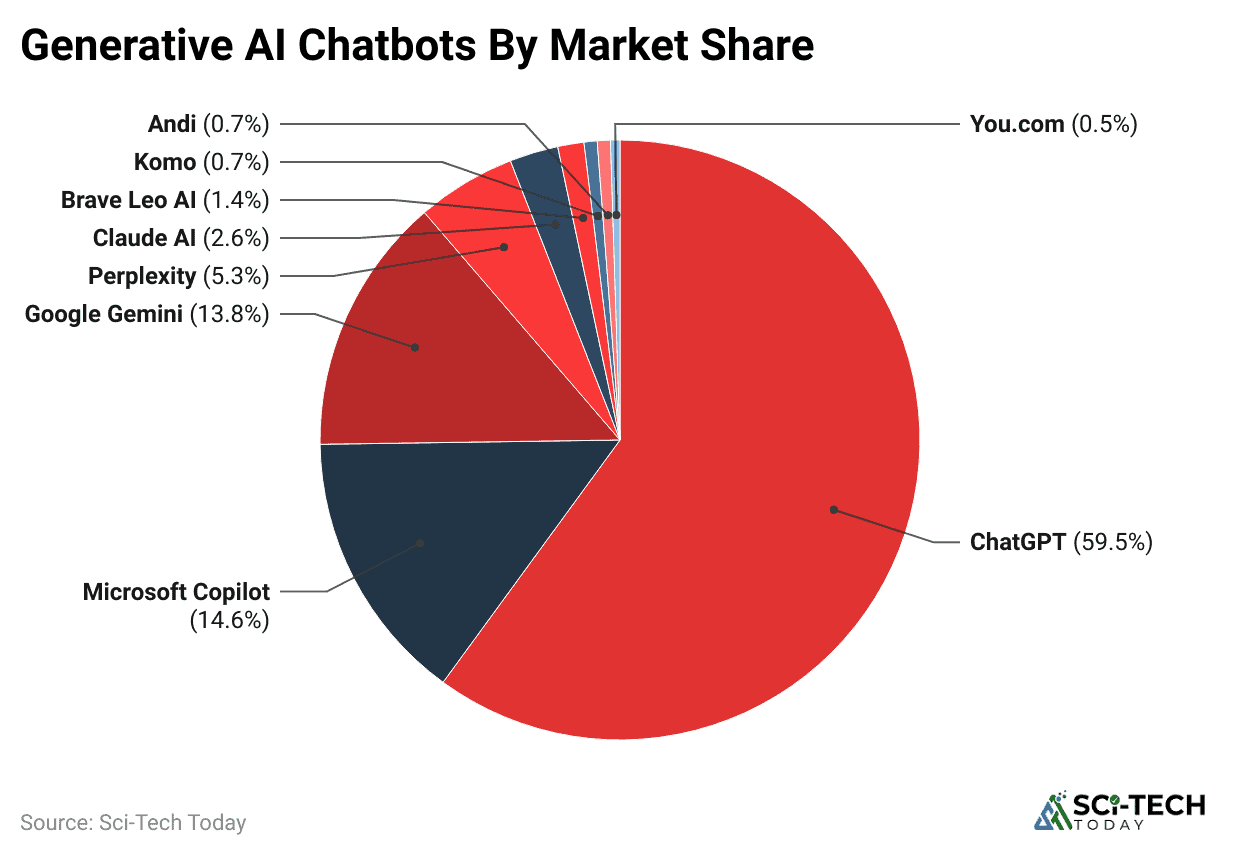
Chatbot Statistics Reflecting the Generative AI
- 95% of all customer service interactions are projected to be powered by AI or chatbots by 2025, marking the complete assimilation of conversational tech into business operations.
- The global Generative AI chatbot market is seeing explosive growth, with a small number of providers holding a massive lead. For instance, one major GenAI platform held a commanding market share of nearly 80% among the top competitors in 2024.
- Gartner predicts that by 2026, over 40% of new enterprise applications will feature embedded Conversational AI agents, up from less than 5% in 2025, confirming its rapid shift from a standalone tool to an integrated component.
- Chatbots equipped with advanced AI are expected to become the most popular customer tech in the next five years, according to a significant portion of AI startup founders.
- The advancements in Generative AI are making it harder to distinguish between human and machine, with 27% of users reporting they were uncertain whether their last customer support interaction was with a person or a chatbot.
- Voice-enabled interfaces, which utilize advanced chatbot tech, are set to reach a massive 8.4 billion units worldwide by 2024, underscoring the expansion of conversational AI beyond just text-based chat windows.
| CS Interactions Powered by AI (2025) | 95% |
| GenAI Market Dominance | 80% (for the leading platform) |
| Voice-Enabled Interfaces (2024) | 8.4 Billion |
| User Uncertainty (Human vs. Bot) | 27% |
Conclusion
Overall, the statistics make the case clearly: the chatbot thing is a present-day reality, driving massive growth and efficiency.
These data show a market exploding toward $27.29 billion and validate their power to deliver both huge cost savings and the 24/7 service customers now expect. So, Generative AI continues to improve, and the most advanced chatbots will move beyond giving simple answers to become true autonomous tools that manage complex workflows.
So, for any business aiming to stay competitive, the choice is simple. Chatbot is no longer a tool for better customer service; it is a mandatory pillar for the future of business operations, sales, and strategy. I hope you like this one. Thanks for staying up till the end.
FAQ.
A chatbot is a computer program that is designed to have conversations with humans. Think of it as a virtual assistant that talks to you using text or voice.
Smart chatbots use AI (Artificial Intelligence). They are trained on a massive amount of text from the internet. When you ask a question, the AI uses a process called a Large Language Model to figure out the best, most human-like answer by predicting the next most logical word, and then the next, and so on.
They are used for many things:
- Customer Service: Answering common questions on a company’s website (like What is your return policy).
- Information: Summarizing articles, finding facts, or explaining complex topics.
- Creative Tasks: Writing emails, poems, school essays, or computer code.
- Personal Use: Generating ideas or brainstorming.
Yes, one of the biggest benefits is that chatbots are available 24 hours a day, 7 days a week. They don’t need breaks or sleep, so you can get instant help anytime.
A: Chatbots are very good at simple, factual questions. However, they can struggle with complex issues that require deep problem-solving, or conversations that need human empathy (like an emotional complaint or a sensitive personal matter). Most businesses will switch you to a real human if the issue becomes too hard for the bot.
- Wrong Answers (Hallucinations): Sometimes, the bot might make up information that sounds real but is completely false. You should always double-check important facts.
- Lack of Real Understanding: While they sound smart, they don’t actually know or feel anything like a person.
- Privacy Worries: The data you put into a public chatbot might be used to train the model, so you should never share personal or sensitive information (like passwords, credit card numbers, or medical details).
A: Most experts agree that chatbots will change many jobs, but they won’t fully replace people. They are very good at automating simple, repetitive tasks, which lets humans focus on work that needs creativity, complex thinking, and emotional connection.

Barry is a technology enthusiast with a passion for in-depth research on various technological topics. He meticulously gathers comprehensive statistics and facts to assist users. Barry's primary interest lies in understanding the intricacies of software and creating content that highlights its value. When not evaluating applications or programs, Barry enjoys experimenting with new healthy recipes, practicing yoga, meditating, or taking nature walks with his child.
